The sissy squat is a quad exercise that’s hit it big of late.
Its stock has soared because it trains all the muscles in your quads while fully lengthend—something most other quad exercises, including the back and front squat, don’t. And this means it’s uniquely effective for rounding out quad development.
In this article, you’ll learn how to do the sissy squat with proper form, what makes it beneficial, the best sissy squat alternatives, and more.
Key Takeaways
- Sissy squats are a bodyweight exercise that train all four of your quad muscles, something most other leg exercises miss.
- A key sissy squat benefit is that they train your quads while fully stretched, which may boost growth.
- The best sissy squat alternatives are the kneeling, banded, Smith machine, and weighted versions of the exercise.
- You can perform sissy squats at home the same way you do them in the gym, making them a convenient and effective exercise wherever you like to train.
- Sissy squats are safe for most people’s knees, but if you experience discomfort, consider a sissy squat alternative that’s easier on your joints.
What Is a Sissy Squat?

The sissy squat is a bodyweight exercise that trains the quadriceps.
You perform the sissy squat by holding onto something sturdy, then flexing your glutes and bending your knees, allowing your body to lean backward, your knees to track over your toes, and your heels to come off the ground.
You continue to lower yourself until your knees are fully bent, then straighten your knees to stand back up.
You can also perform the sissy squat using a sissy squat machine (or “sissy squat bench”), a piece of equipment that locks your feet and shins in place, allowing you to perform the exercise with greater stability.
While performing a sissy squat with a sissy squat machine can be more comfortable, it prevents you from fully lengthening the quads while performing the exercise, which means it probably isn’t quite as effective for building muscle as the regular sissy squat. Furthermore, most commercial gyms don’t have a sissy squat machine.
For these reasons, most people prefer the regular sissy squat, so that’s the variation we’ll focus on in this article.
Sissy Squat Form
The best way to learn how to do a sissy squat is to split the exercise into three parts: set up, descend, and ascend.
1. Set Up
Stand with your feet shoulder-width apart and a sturdy object (such as a squat rack) 1-to-2 feet from your dominant side. Grab the object with your dominant hand between hip and chest height.
2. Descend
Flex your glutes as hard as possible, then bend your knees and allow them to move forward over your toes. As you descend, let your body lean backward and your heels come off the floor.
Continue descending as far as you comfortably can or until your glutes are 6-to-12 inches from your heels.
3. Ascend
Reverse the movement and return to the starting position by pushing your feet into the floor and straightening your knees. This is a mirror image of what you did during the “descent.”
As you ascend, ensure your hips remain fully extended so that your body forms a straight line from your head to your knees.
Here’s how it should look when you put it all together:


Sissy Squat Benefits
Four muscles make up the quadriceps: the vastus lateralis, vastus medialis, vastus intermedius, and rectus femoris.
Here’s how they look:
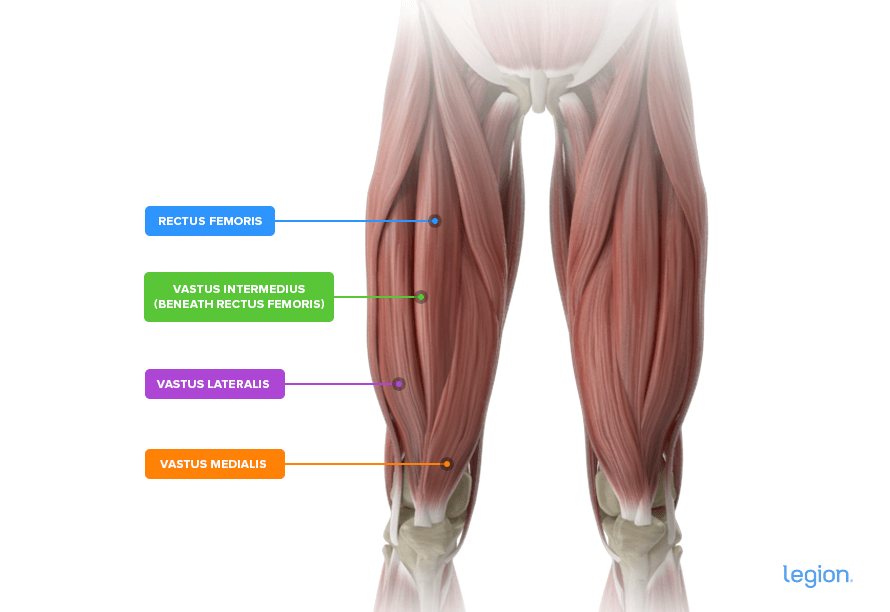

The three “vastus” muscles attach to the femur (thigh bone) and knee and are responsible for “extending” (straightening) the knee. Conversely, the rectus femoris attaches at the hip and knee, which means it extends the knee and “flexes” the hips (brings your knees closer to your chest).
Thus, to fully stretch the vastus lateralis, vastus medialis, and vastus intermedius, you must fully bend your knee. However, to fully stretch the rectus femoris, you must fully bend your knee while “extending” your hips (pushing your hips forward to create a straight line between your torso and thighs).
Most leg exercises, including the front, back, and Bulgarian split squat, involve bending the knees while extending the hips, but few involve bending the knees while the hips remain extended.
This means most leg exercises train the vastus muscles in a fully stretched position but don’t train the rectus femoris when fully lengthened. This is significant because studies show that training your muscles in a stretched position is important for maximizing growth.
In other words, most leg exercises effectively train the vastus muscles, but most don’t optimally stimulate the rectus femoris.
Herein lies the biggest benefit of sissy squats: it involves squatting with your hips fully extended, making it ideal for emphasizing the rectus femoris and rounding out your quad development.
Sissy Squat: Muscles Worked
The main muscles worked by the sissy squat exercise are the quadriceps, the four muscles on the front of your thigh:
- Vastus medialis
- Vastus lateralis
- Vastus intermedius
- Rectus femoris
Here’s how they look on your body:
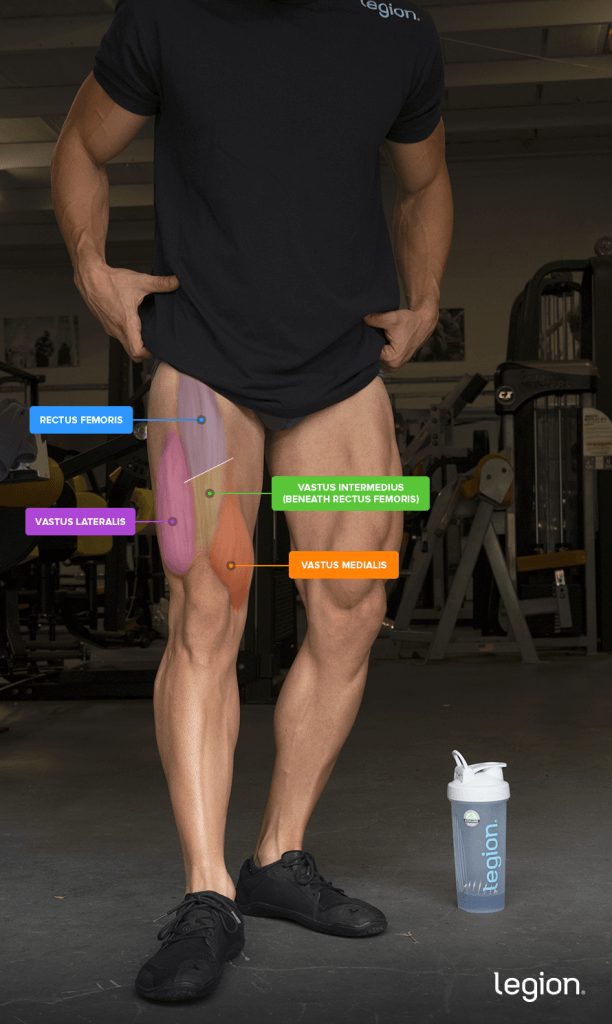

The Best Sissy Squat Alternatives
1. Kneeling Sissy Squat
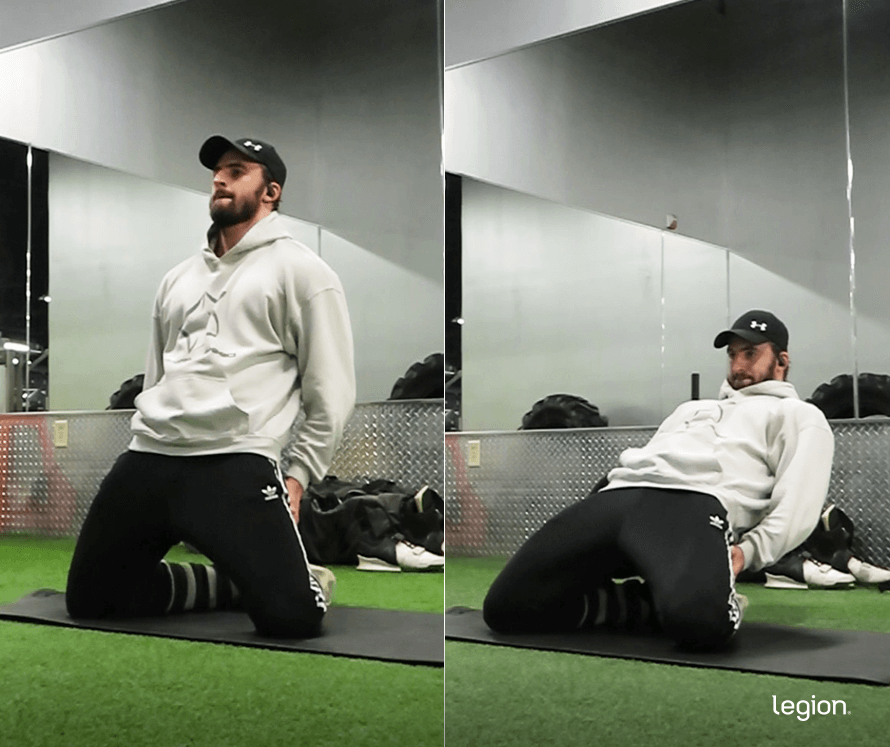

The kneeling sissy squat is an excellent alternative if you’re new to sissy squatting because it allows you to strengthen the same muscles as the regular sissy squat from a kneeling position, which gives you a more stable base and minimizes the balance required to perform the exercise.
2. Banded Sissy Squat
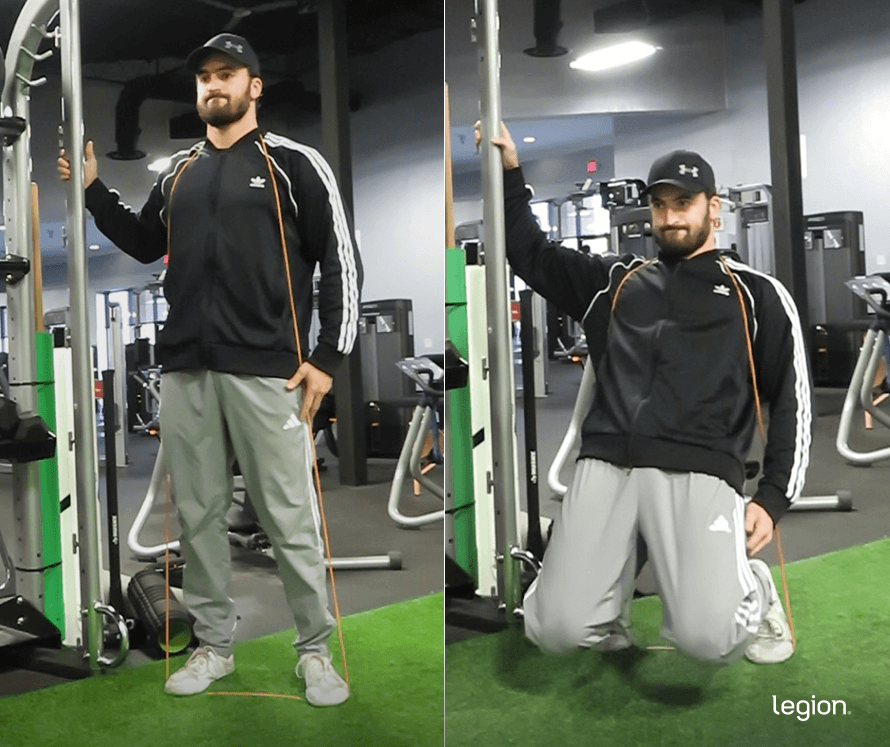

In the banded sissy squat, you stand on one end of a resistance band and wrap the other end behind your neck. It’s a fantastic alternative because it allows you to progressively overload the sissy squat when the bodyweight sissy squat becomes too easy, which is vital for gaining muscle and strength.
3. Smith Machine Sissy Squat
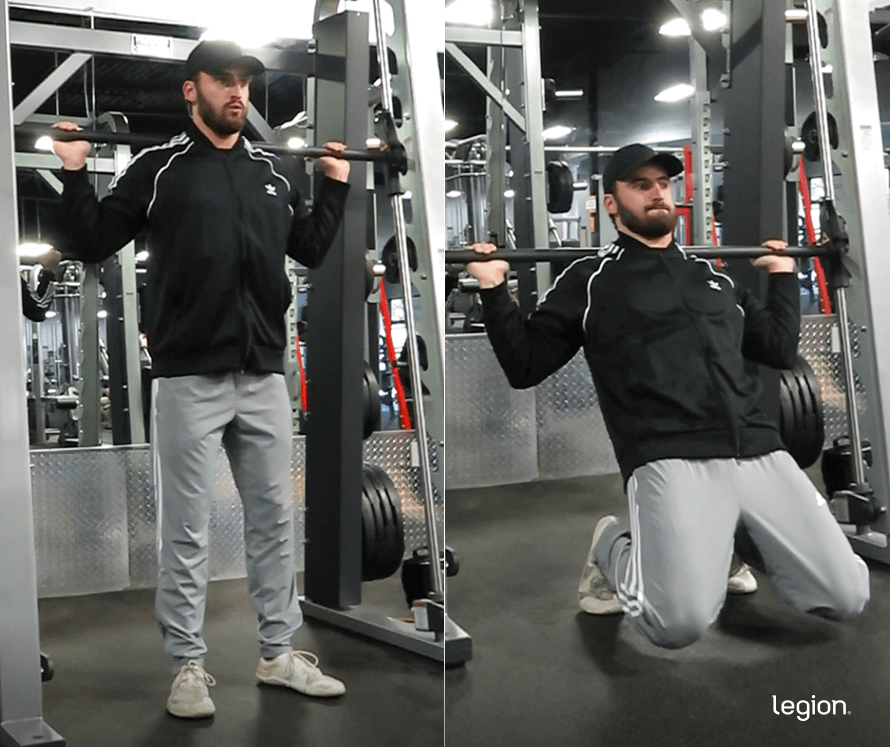

The Smith machine sissy squat requires less balance and coordination than the regular sissy squat, making it a workable variation for those who find the regular version unstable or awkward.
This sissy squat alternative also makes adding weight more straightforward, which is beneficial for advanced weightlifters who find the bodyweight version too easy.
4. Weighted Sissy Squat


The main benefit of the weighted sissy squat over the bodyweight sissy squat is that it allows you to lift progressively more weight over time, which is important for gaining muscle and strength. That said, the weighted sissy squat is difficult to do correctly, which means it isn’t ideal for everyone, especially new weightlifters.
FAQ #1: What do sissy squats work?
The sissy squat works the quadriceps. However, there’s slightly more to it than that. The sissy squat’s benefit is that, unlike most leg exercises, it trains all four quad muscles, including the rectus femoris.
In other words, the sissy squat is an excellent exercise for building proportional quad mass because it works all the muscles on the front of your thighs.
FAQ #2: Are sissy squats bad for your knees?
Sissy squats aren’t inherently bad for your knees. While fully bending your knees increases knee torque, the stress on your knees during sissy squats is well within safe limits for most people.
That said, you may find the sissy squat uncomfortable if you already have knee issues. And if that’s the case for you, it’s sensible to find a sissy squat alternative that you can perform without pain.
FAQ #3: Are sissy squats good for quad growth?
Yes, sissy squats are good for quad growth. They train your entire quads through a large range of motion and while fully stretched, so they’re highly beneficial for adding mass to your thighs.
FAQ #4: Can you do sissy squats at home?
Yes, you can do sissy squats at home the same way you do them in the gym: grasp something sturdy, flex your glutes and bend your knees to lean back, let your knees track over your toes and your heels lift off the floor, and then straighten your knees to stand back up.
Scientific References +
- Neumann, Donald A. “Kinesiology of the Hip: A Focus on Muscular Actions.” Journal of Orthopaedic & Sports Physical Therapy, vol. 40, no. 2, 1 Feb. 2010, pp. 82–94, https://doi.org/10.2519/jospt.2010.3025.
- Maeo, Sumiaki, et al. “Greater Hamstrings Muscle Hypertrophy but Similar Damage Protection after Training at Long versus Short Muscle Lengths.” Medicine & Science in Sports & Exercise, vol. 53, no. 4, 2 Oct. 2020, pp. 825–837, https://doi.org/10.1249/mss.0000000000002523. Accessed 9 Aug. 2021.
- Pedrosa, Gustavo F., et al. “Partial Range of Motion Training Elicits Favorable Improvements in Muscular Adaptations When Carried out at Long Muscle Lengths.” European Journal of Sport Science, vol. 22, no. 8, 23 May 2021, pp. 1250–1260, pubmed.ncbi.nlm.nih.gov/33977835/, https://doi.org/10.1080/17461391.2021.1927199.
- EARP, JACOB E., et al. “Inhomogeneous Quadriceps Femoris Hypertrophy in Response to Strength and Power Training.” Medicine & Science in Sports & Exercise, vol. 47, no. 11, Nov. 2015, pp. 2389–2397, https://doi.org/10.1249/mss.0000000000000669. Accessed 2 Feb. 2020.
- Kubo, Keitaro, et al. “Effects of Squat Training with Different Depths on Lower Limb Muscle Volumes.” European Journal of Applied Physiology, vol. 119, no. 9, 22 June 2019, https://doi.org/10.1007/s00421-019-04181-y.
- Schoenfeld, Brad J. “Squatting Kinematics and Kinetics and Their Application to Exercise Performance.” Journal of Strength and Conditioning Research, vol. 24, no. 12, Dec. 2010, pp. 3497–3506, journals.lww.com/nsca-jscr/fulltext/2010/12000/squatting_kinematics_and_kinetics_and_their.40.aspx, https://doi.org/10.1519/jsc.0b013e3181bac2d7.

